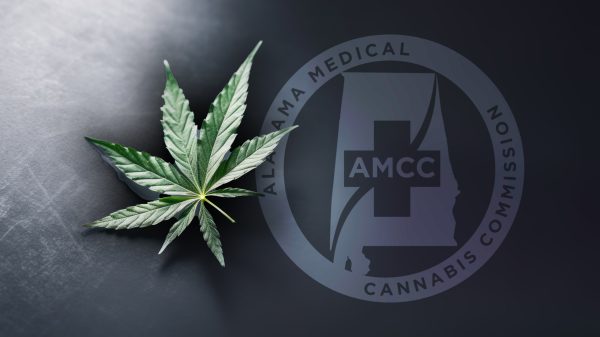When should Alabama reopen its economy after the COVID-19 shutdown? President Trump has said the decision is for Governors to make, even if he disagrees with his or her decision. Alabama Gov. Kay Ivey has said she plans to announce a decision this week, possibly April 28.
White House Guidelines for “Opening Up America Again”
On April 17, 2020, Governor Ivey issued a statement indicating that Alabama would follow the White House Guidelines for “Opening Up America Again” and plans to base her decision on data, as the Guidelines recommend. Using the White House Guidelines, what does the Alabama data tell us about when Alabama should begin to reopen its economy.?
While the White House’s other COVID-19 responses have been criticized, the White House Guidelines have generally received positive reactions. And to be clear, as this blog post I wrote explains, the Guidelines recommend a thoughtful phased lifting of restrictions based on data, not a sudden return to normal based on politics.
Gating criteria: The White House Guidelines recommend that states reopen in three phases using “Proposed State or Regional Gating Criteria.” The gating criteria are to be met before a state begins each phase. The gating criteria are (1) a state’s hospitals treat all patients without crisis care, (2) a state’s COVID-19 symptoms and cases for a 14-day period have a downward trajectory and (3) a state have a robust testing program, including emerging antibody testing, in place for at-risk healthcare workers.
First gating criterion – Hospitals treat all patients
Whether Alabama can treat all patients without crisis care could have been the most important gating criteria, but fortunately appears not to be an issue. If Alabama hospitals had been overwhelmed with COVID-19 patients, or close to being overwhelmed, the Alabama data on COVID-19 patients in the hospital, in Intensive Care Units (ICUs), and on ventilators would be important data to analyze for this criterion. Largely due to the shutdown, though, no information suggests that Alabama hospitals have been overwhelmed or close to being overwhelmed. The hospital numbers and deaths make clear that this pandemic has had tragic impacts on many Alabama families, but our leadership took precautions and has kept us from disaster.
Second gating criterion – Downward trajectory
For a state’s COVID-19 data, what might be a “downward trajectory” is unclear and will be unclear. As well as what COVID-19 data to use, the issues include what is downward. Does downward mean a consistent downward trend for 14 days? Or does downward also include a decline then reaching a plateau. And what if one day is almost zero and then the next day spikes up? For comparison, Alabama data reflects 0 new reported hospitalizations on April 20 and then twice the number of typical hospitalizations on April 21.
As some readily available historical graphs for different nations’ new COVID-19 cases show, even using 5-day rolling averages to adjust for data reporting anomalies, the numbers for new cases may start going down and then go back up. In addition, the overall pattern for deaths in Spain and Italy suggests to expect a peak, some decline, and then reaching a plateau, not a bell curve that goes up and then symmetrically comes down.
Current COVID-19 cases data: The Guidelines refer to COVID-19 cases, not new cases. According to a World Health Organization report, “the median time from onset to clinical recovery for mild cases is approximately 2 weeks and is 3-6 weeks for patients with severe or critical disease.” Little Alabama information is available about current COVID-19 cases, because little information is available as to when people recover.
New COVID-19 cases data: Based on the lack of COVID-19 data on current cases, decisions can be based on data for new cases. Because hospitals’ being overwhelmed is not a concern now, new COVID-19 cases data can work about as well. To adjust for possible reporting anomalies, one should also look at 5-day rolling new case averages.
As data made easily accessible by the Alabama Political Reporter reflect, the numbers of new Alabama reported COVID-19 cases has gone up a lot and then gone up and down. Recently, the numbers of new cases/day seemed to hit a plateau with a slight increase for April 16-20 (163, 168, 151, 180, 175 new cases), but then spiked up April 21-22 (249, 283 new cases), and started declining again April 23-25 (222, 194, 187 new cases), with a slight increase yesterday, April 26 (205 new cases).
{{CODE1}}
Using rolling 5-day new case averages, the data is similar with a simpler pattern. The 5-day new cases averages declined from April 15-20 (247, 228, 198, 184, 190, 167 new cases averages), increased from April 21-25 (185, 208, 222, 225, 227 new cases averages), and may have begun to decline slightly again April 26 (218 new cases average).
{{CODE2}}
New cases downward trajectory: Using the numbers in the paragraphs above, the Alabama new cases started a downward trajectory April 23 with a slight one day increase yesterday, April 26. If that downward trend continues and makes the April 26 increase an anomaly, 14 days from April 23 is May 6. Another approach uses the rolling 5-day new case averages. The Alabama rolling 5-day new case averages may have started to decline April 26, but looks more like it reached a plateau. If that slight decline is the start of a downward trend, 14 days from April 26 is May 9.
Look out for a rebound: To move from phase one to phase two after 14 days and from phase two to phase three after 14 days, the White House Guidelines recommend that a state not have a COVID-19 “rebound.” A rebound would be an increase in COVID-19 cases due to beginning to remove restrictions. Similar to a downward trajectory, identifying when COVID-19 cases for a 14-day period have had a rebound might be difficult. Does a rebound include reaching a plateau, or does it only mean an increase? And is 14 days long enough to make a judgment about a rebound? Individuals and employers may delay following the lifting of restrictions, and the COVID-19 incubation period can be 14 days. If rebounds are to occur, a state might already be in Phase Three, thus compounding problems.
Other estimate as to when Alabama should reopen its economy: University of Washington epidemiologists set up a model projecting the future course of the coronavirus outbreak and translated those projections into suggested time frames for loosening strict shelter-at-home orders across the country. Assuming “strategies that include testing, contact tracing, isolation, and limiting gathering size,” their Alabama projection as of April 22, 2020, was to begin relaxing restrictions on May 19, 2020.
Third gating criterion – Robust testing program
At this time, no state, including Alabama, has a robust COVID-19 testing program. While the White House has said testing is already sufficient, both White House physicians, Dr. Anthony Fauci and Dr. Deborah Birx, have in the past few days made clear that testing availability is not there yet but might be in weeks.
Robust testing: South Korea has had a robust testing program. It has had relative success avoiding as many COVID-19 infections, hospitalizations and deaths, largely due to its testing program and subsequent follow up after testing. South Korea tested each day about 8,000 people per million people. For Alabama, that proportionally would be about 40,000 tests/day and could be part of a robust testing program like in South Korea.
Minimum needed testing: How much testing is needed? The Rockefeller Foundation has estimated that the United States needs initially 3,000,000 tests per week and should build up to 30,000,000 tests per week. The Kaiser Family Foundation reviewed studies on what testing capacity is needed and arrived at similar estimates. Using the Rockefeller Foundation’s estimates, proportionally for Alabama, that would be about 45,000 tests per week building up to about 450,000 tests per week.
Alabama testing: As reflected in the Alabama COVID-19 data reported by the Alabama Political Reporter, Alabama has been increasing testing and had about 6,000 tests/day the past several days. That would be 42,000 tests/week. So, with an expected increase in testing in the weeks ahead, Alabama would have above the recommended minimum number of tests, but not close to robust testing.
{{CODE3}}
Antibody testing: Finally, reliable approved antibody testing is not readily available. Both the CDC and the FDA are working on having available approved tests for antibodies. When that will happen is uncertain.
Conclusion
The Alabama data tells us that Alabama’s reopening its economy, using the White House’s gating criteria, in the first half of May depends on an uncertain decline in the numbers of new cases per day for the next week or two. If the numbers of new cases trends down with the slight April 26 increase just an anomaly, Alabama could begin to remove some restrictions on May 6 or May 9, assuming the testing inadequacies are resolved or overlooked.
Whether and when to begin with the White House Guidelines’ phase one to begin reopening the economy depends on (1) what happens in the next days and (2) based on the lack of robust testing and other uncertainties, might depend on one’s judgments about the risks to Alabama families’ health and lives when reopening the Alabama economy.



















































